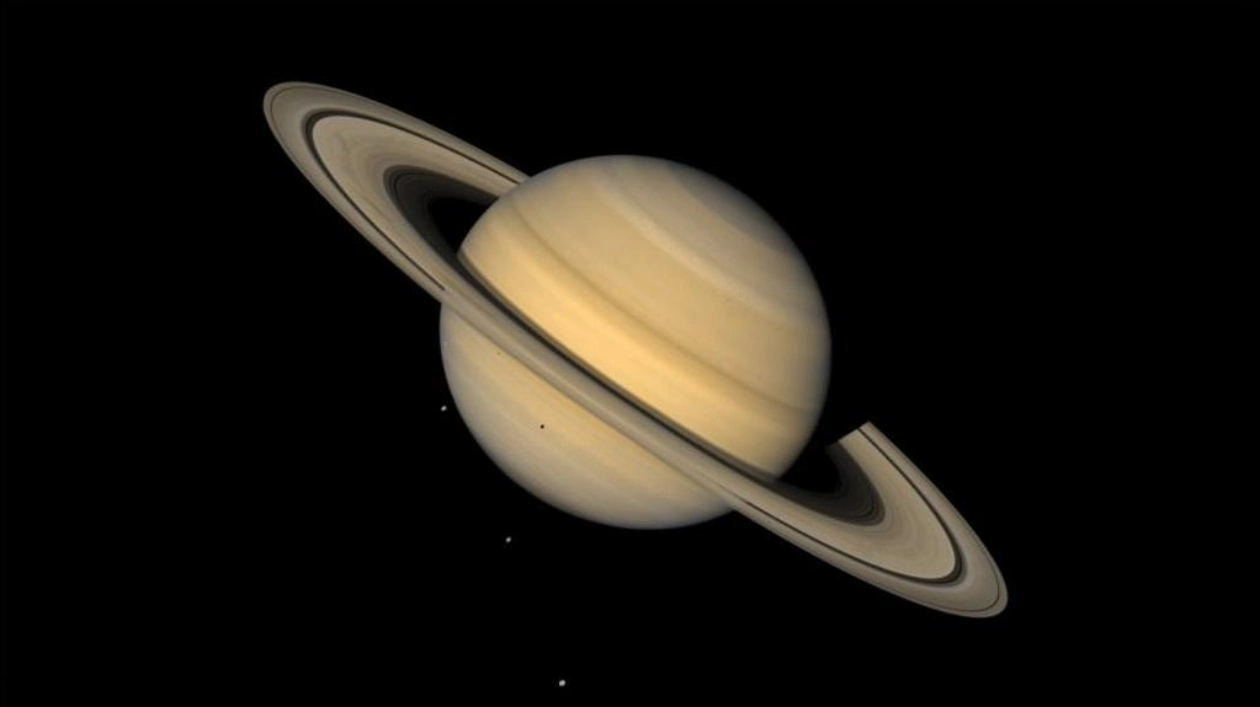Astronomers have discovered an asteroid that is moving in sync with Saturn as it orbits the sun. These objects, known as Trojan asteroids, are already familiar to the other three giant planets. “Saturn was somewhat the odd one out, if I may say so, because despite being the second most massive planet in the solar system, it didn’t have any Trojans,” explains Paul Wiegert, an astronomer at the University of Western Ontario in London, Canada. The newly found asteroid, like Saturn, takes about 30 years to complete an orbit but is positioned 60 degrees ahead of the planet in its path, as reported by Wiegert and his team in a study submitted on September 29 to arXiv.org.
Most asteroids in the solar system orbit the sun between the paths of Mars and Jupiter. In 1906, German astronomer Max Wolf identified the first Trojan, naming it Achilles, which orbits the sun 60 degrees ahead of Jupiter. Since then, thousands of additional Trojan asteroids have been discovered, some ahead and some behind Jupiter. The NASA spacecraft Lucy is set to visit eight of these between 2027 and 2033.
Trojan asteroids are also known to exist for Uranus and Neptune, as well as for Earth and Mars. After a telescope in Hawaii captured an image of the new asteroid in 2019, amateur astronomer Andrew Walker in Australia speculated that it might be a Saturnian Trojan, provided it had the correct orbit around the sun. “The key to determining a good orbit for an object in our solar system is having numerous observations from various telescopes over an extended period,” Wiegert notes. Astronomer Man-To Hui at Macau University of Science and Technology in China then searched for previous images of the asteroid and planned further observations.
Measurements of the asteroid’s position from 2015 to 2024 confirmed its Trojan status. Named 2019 UO14, the asteroid is approximately 13 kilometers in diameter, similar in size to Deimos, Mars’ smaller moon. Scientists have long anticipated the existence of Saturnian Trojans, says astronomer Carlos de la Fuente Marcos of Complutense University of Madrid, who was not involved in the discovery. However, all Saturnian Trojans are expected to have unstable orbits due to the presence of giant planets on either side of Saturn.
“Jupiter appears to be the main factor,” de la Fuente Marcos states. Jupiter’s strong gravity gradually affects a Saturnian Trojan, causing its orbit around the sun to become increasingly elliptical. The asteroid then drifts so close to Jupiter or Uranus that one of these giant planets dislodges the small body from its Trojan orbit. The researchers estimate that the asteroid has been a Trojan for roughly 2,000 years and will continue to be so for another 1,000 years. Before its association with Saturn, the asteroid was likely a centaur, an asteroid moving among the orbits of the giant planets.
The asteroid is likely not Saturn’s only Trojan. “I’m quite confident there are more — possibly just a few, but this can’t be the only one,” Wiegert concludes.






